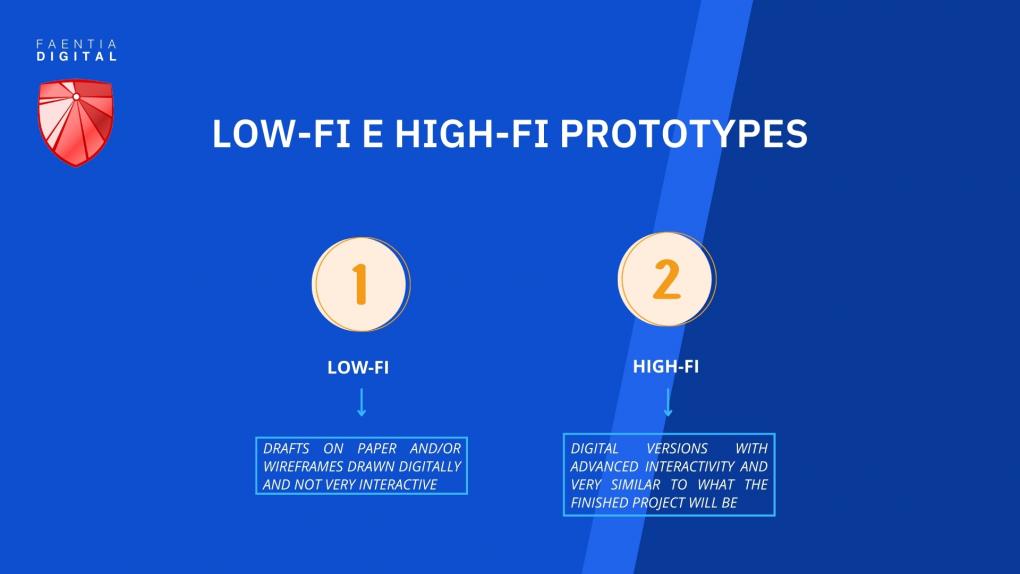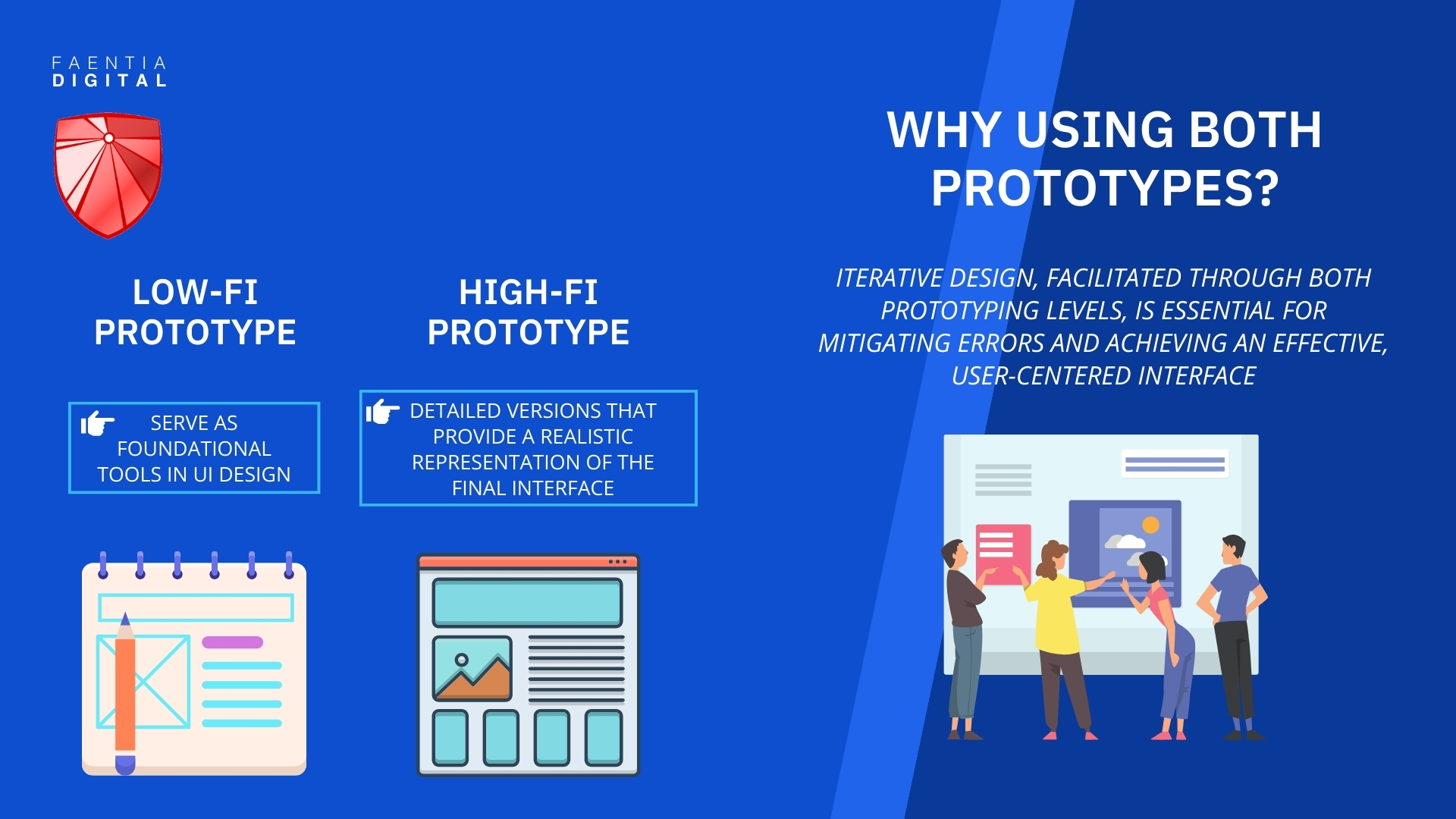
Low-Fi e High-Fi Prototypes
Having explored the significance of User Research and its implementation, the next step is the creation of prototypes for our interface. However, there is a tendency to downplay the importance of the Low-Fi Design phase in favor of the more sophisticated High-Fi version, potentially leading to errors.
The Low-Fidelity (Low-Fi) Prototype
Low-Fi prototypes, such as paper sketches and digital wireframes with minimal interaction, serve as foundational tools in UI Design. Their versatility allows for quick hypothesis testing based on User Research data, enabling efficient and speedy iterations. Essential for User Testing, these prototypes help define key elements aligned with User needs, such as navigation and data area positioning. Undervaluing these prototypes can result in overlooking structural errors, complicating the development of the final interface.
The High-Fidelity (High-Fi) Prototype
Once the key elements are defined and validated through Low-Fi prototypes, the Design process progresses to High-Fi prototyping. These detailed and elaborate versions provide a realistic representation of the final interface, incorporating interactive navigation. This similarity aids in assessing compliance with regulatory standards related to usability and safety. High-Fi prototypes offer stakeholders a precise vision of the final result, making it accessible to individuals who may struggle to grasp concepts conveyed by the Low-Fi version.
Why using both Prototypes?
Both Low-Fi and High-Fi prototyping phases are indispensable in Industrial interface Design, and both should always be executed. Unfortunately, Low-Fi prototypes are often undervalued by those unfamiliar with the UX process, creating an imbalance. This cultural gap can be bridged by advocating for the User-Centered Design (UCD) method and its significance to project stakeholders from the outset. Establishing the importance of collaboration with Industrial Designers lays the foundation for a fruitful partnership.
Iterative Design, facilitated through both prototyping levels, is essential for mitigating errors and achieving an effective, User-centered interface. Properly executed prototyping at both Low-Fi and High-Fi levels is crucial for respecting the project budget. Intervening on an already coded Design post-implementation is a complex and expensive operation, emphasizing the proactive role of comprehensive prototyping in the Design process.



